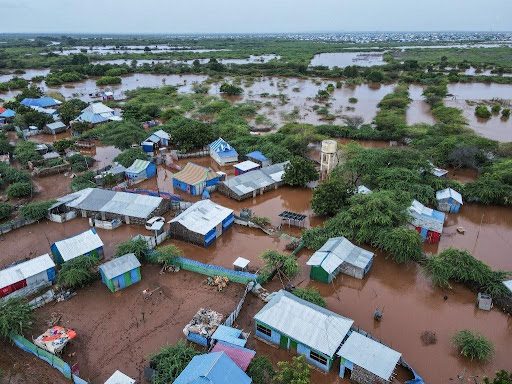

Sub-Saharan Africa stands at a critical juncture in addressing its energy needs amidst growing demand driven by rapid urbanization and population growth. The region faces formidable challenges in delivering reliable and affordable energy while grappling with inadequate infrastructure and systemic inefficiencies. The Puma Energy White Paper: Fuelling Africa’s Potential – Bridging the Gap in Energy Infrastructure (2024) outlines these issues and proposes actionable solutions to drive energy security and socio-economic growth across the continent.
Energy demand in Sub-Saharan Africa is surging due to population expansion and industrial activity. However, infrastructure shortfalls have led to significant challenges. According to the report, approximately 600 million people in the region lack access to reliable electricity. While oil products such as gasoline, diesel, and kerosene continue to play a central role in meeting energy needs, their supply chains are fragmented, inefficient, and often constrained by aging infrastructure.
The region’s refining capacity has not kept pace with demand. Refinery outputs have fallen drastically over the past decade, exacerbating the reliance on imports to bridge the gap. For example, the clean product deficit grew from 49 million metric tons (mt) in 2013 to 80 million mt by 2022. Although new projects, such as Nigeria’s Dangote refinery, promise some relief, the long-term trend indicates a widening shortfall if further investments are not made.
Despite these challenges, several innovative strategies are gaining traction in Africa’s energy landscape. Renewable energy sources, such as solar and wind, offer promising alternatives to traditional fossil fuels. Kenya leads the region with nearly 75% of its electricity generated from renewable sources, including geothermal energy. However, scaling these solutions across the continent requires significant investment and supportive policies.
Hybrid systems, which integrate renewable energy with traditional grids, are emerging as practical solutions to improve energy reliability. For instance, pilot projects in Zambia are utilizing solar-diesel combinations to optimize power delivery while reducing environmental impact. Similarly, Puma Energy has invested in solar hubs across markets like Tanzania and Senegal, helping businesses and communities transition to cleaner energy sources.
Technological advancements are also reshaping Africa’s energy systems. AI-driven tools are being adopted to streamline operations, enhance predictive maintenance, and improve efficiency across supply chains. This digital transformation, although in its early stages, holds the potential to address some of the persistent challenges in energy distribution.
Effective policies and investments are critical to addressing the energy infrastructure deficit. Public-private partnerships (PPPs) are cited in the report as instrumental in mobilizing resources and fostering innovation. For instance, Namibia’s renewable energy projects, developed through PPPs, highlight how collaborative frameworks can lead to scalable and sustainable solutions.
Regulatory harmonization is another critical area of focus. Inconsistent policies across borders often hinder the efficient flow of energy products. The East African Community’s introduction of uniform product specifications in 2015 demonstrates the benefits of a coordinated regional approach. Such efforts can reduce inefficiencies, lower costs, and attract foreign direct investment.
The financial requirements for meeting Africa’s energy infrastructure needs are staggering. The report estimates an annual investment of $60 billion is necessary to achieve targeted growth and stability. Green financing models, such as sustainability-linked bonds and blended finance mechanisms, are increasingly being leveraged to bridge funding gaps. These models align with global decarbonization goals while addressing local developmental priorities.
The energy transition in Africa must prioritize sustainability without compromising economic growth. This dual approach is particularly relevant as the region balances its reliance on fossil fuels with the adoption of renewable energy. The report underscores the importance of investing in green technologies, such as solar-powered storage and electric vehicle charging networks, which can drive down emissions while fostering industrial growth.
Education and workforce development are equally vital to ensuring the sustainability of energy infrastructure. Technical training programs and capacity-building initiatives can equip local communities with the skills needed to manage and maintain modern energy systems. These efforts not only generate employment but also empower communities to actively participate in their development.
The transition to sustainable energy sources is intertwined with regional collaboration. Projects like the African Continental Free Trade Area (AfCFTA) provide a framework for collective action, enabling countries to pool resources and expertise to accelerate infrastructure development. By integrating energy planning with broader economic goals, Africa can position itself as a competitive player in the global energy market.
Addressing Africa’s energy infrastructure gap requires a multifaceted approach that combines innovation, investment, and collaboration. The report provides a comprehensive roadmap for overcoming these challenges. By prioritizing sustainability and fostering regional cooperation, the continent can unlock its vast energy potential and lay the foundation for long-term growth.
Success stories in countries like Kenya, Namibia, and Senegal demonstrate that progress is achievable when stakeholders unite behind shared objectives. The ongoing transformation of Africa’s energy landscape is not just a response to immediate needs but also an investment in a sustainable, equitable future. By bridging the energy infrastructure gap, Sub-Saharan Africa can empower its people and contribute meaningfully to the global economy.

